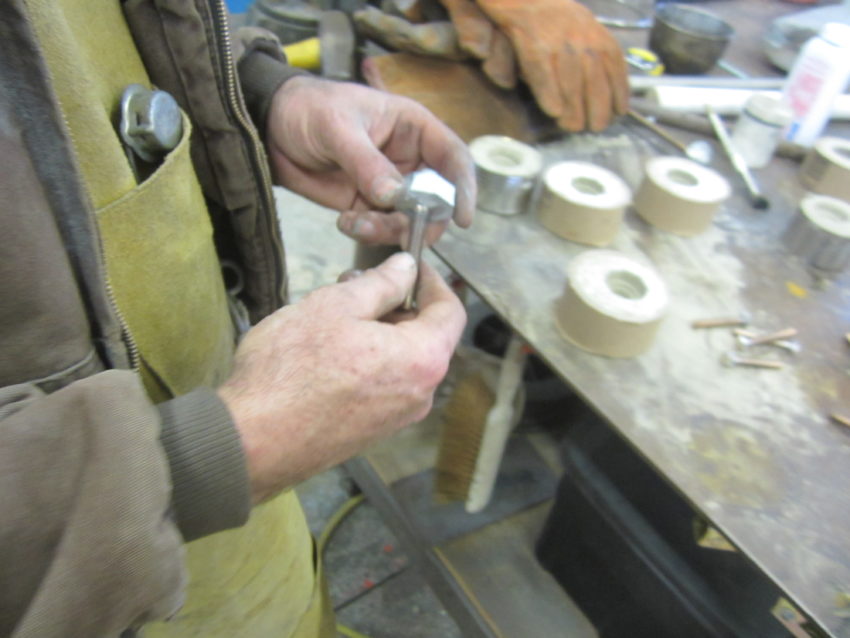The McKay Lodge Conservation Laboratory team recently performed a zinc Civil War monument restoration in Indiana. In September of 1884 the town of Mishawaka erected a cast zinc memorial for those who fought and died in the Civil War in Battell Park. It stands nearly 30 feet tall featuring several tiers of plaques, figures, and images of different military branches. The monument is topped with a Union Army solider that weighs approximately 790 pounds.

For outdoor sculpture conservators, it is well-known that many late 19th century cast zinc sculptures exhibit similar condition issues. Senior Conservator of Sculpture, Thomas Podnar, initially assessed the Mishawaka Soldiers Monument before developing a treatment plan.

The cast metal was brittle overall. Before treatment, the top figure was leaning under its own weight. From a profile view, it almost appeared as if the solider was falling backwards. The cast zinc base element was also embedded in concrete. An internal armature which might have been added later, was actively rusting and not providing any support for the monument. In addition, there were cracks in the metal and areas of corrosion throughout the monument. The concrete base was also crumbling.

The zinc Civil War monument restoration began with the disassembly of each section from the top figure to the large base. The components were then transported to the McKay Lodge Conservation Laboratory in Oberlin, Ohio. At the lab, the fragile but large zinc components were separately treated. Sections of the metal that were warped were heated and then straightened as much as possible. Cracked areas were welded together with new filler rod then chased to recreate the original surface detail.


Once the zinc components were individually stabilized by fixing cracks and correcting bent or broken areas, they still required additional reinforcement. A stainless-steel armature was fabricated in the lab for each section; this internal armature allowed the zinc components to be suspended by the armature, instead supporting their own weight which had led to damage in the past.
Since the original attachment bolts had to be cut for removal, new ones were sand-cast at the lab. Original bolt heads were used to make the mold. In this way, the bolts would look the same as the original fasteners, but they would be made with a more durable alloy and stronger.

Before the completion of the zinc Civil War monument restoration. The entire monument was then pre-assembled as a “dry run” when the restoration of the components was complete. The pre-assembly process ensured that the monument would be able to be plumb and straight overall when it was installed in Battell Park.
All sections were air-abrasive cleaned and pressure-washed to ensure that the color of the monument was as even as possible. The cleaning removed discolorations, streaking, and appearance of repaired areas creating a more visually continuous surface overall. As the cast zinc ages over time, it should oxidize to a stable, gray-blue colored patina. The latter patina is typical for this type of historic zinc monument, and it was recreated for this zinc Civil War monument restoration.
The monument was transported to Battell Park in Mishawaka, Indiana and reassembled on-site with a new concrete base. The concrete base was fabricated by another company. All new stainless-steel bolts, nuts and washers were used to assemble the monument sections together. After the zinc Civil War monument restoration, the monument is stable and the overall appearance is improved.

Battell Park is the oldest park in Mishawaka, Indiana. In 1994, park was designated as a single-site historic district in the City, and one year later the National Register Nomination was completed for the park. From its inception in the early 1880s to a WPA historic rock garden to modern updates Battell Park is worth a visit.
